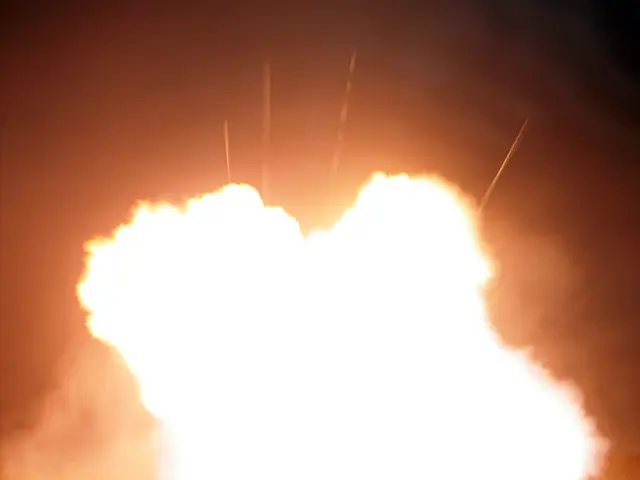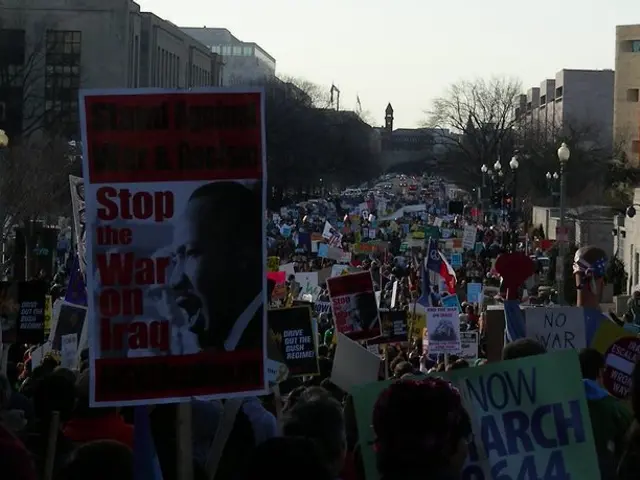Critics Accuse Trump of Using Military Parade as a Costly Personal Celebration, Worth Millions of Dollars
Saving the Dough for Military Families: The Army's 250th Anniversary Parade Debate Rages On
It's a showdown between Congress and the White House, as legislators take aim at the purse strings tied to the U.S. Army's grand 250th anniversary parade. The bash, set for 2025 and eagerly sought by President Trump, could cost taxpayers a whopping $45 million - a claim the POTUS dismisses as "peanuts" compared to the value of the spectacle.
But the critique comes thick and fast, with crunchy arguments suggesting that those funds could be used to assist military families struggling with childcare, food assistance, and tuition. Sen. Tammy Duckworth, for instance, opines that if this shindig were truly about celebrating the troops, that hefty sum could do wonders for our servicemen and women's families.
The Army confirms its projection of spending between $25 and $45 million on the parade, promising a dazzling display of 6,700 troops, tanks, military vehicles, and aircraft staged near the National Mall. However, Sen. Dick Durbin sees this as an opportunity misplaced. He passionately argued during a Senate hearing that resources should be diverted towards medical defense research rather than getting lost in pomp and circumstance for a president's ego trip.
Some critics claim this extravagant event mirrors the regimes they'd rather avoid comparisons with—the images invoked by huge military parades harken back to the Soviet Union and North Korea. Sen. Bernie Sanders suggests that our nation could keep things simple: "Most of us don't celebrate with a $45 million taxpayer-funded military parade," he tweeted, advocating instead for birthday cake and candles.
Even some Republicans find the parade idea suspect. Kentucky Sen. Rand Paul commented that our country is different; he's against the "images you saw in the Soviet Union and North Korea." Other Democrats echo his sentiments, with Rep. Yassamin Ansari labeling the whole affair "outrageous." In her view, enjoying such a parade in the United States is akin to watching it in North Korea.
Army spokesman Steve Warren defends the parade, likening the cost to a worthwhile investment in the nation's foundation: "It is a lot of money, but I think that amount of money is dwarfed by 250 years of service and sacrifice that American soldiers have given this country." His aim is to strengthen the bond between America and its Army through this extravagant event.
Adding fuel to the fire, the White House requested a flyover by the Air Force Thunderbirds. The full cost estimate, including security expenses, remains a mystery.
Some politicians have already made their excuses, skipping the parade due to prior engagements. Georgia Rep. Marjorie Taylor Greene, however, will attend and backs the presentation wholeheartedly. She took to Twitter, professing that she couldn't be more excited for the parade celebrating the U.S. Army's 250th anniversary.
Protests against the Trump administration's immigration crackdown are planned across the country as a counter-program to the parade. The main event, dubbed "No Kings," will unfold in Philadelphia, while nine small protests are expected in Washington, DC. The president himself has warned protesters they will face "heavy force."
In response to accusations of authoritarianism, Trump dismissed the "king" label, insisting, "I don't feel like a king. I have to go through hell to get stuff approved." But the debate rages on, as the nation grapples with financial responsibility and the potential overtures of tradition versus spectacle.
Nate Luna and Anne Flaherty contributed to this report.
Other snippets from Enrichment Data:
- The parade is intended to commemorate not only the 250th anniversary of the U.S. Army but also pay tribute to all branches of the military. 250 years of American military history will be showcased through a grand display of both ground and air forces, with troop movements, logistics planning, and security measures necessitating extensive coordination between various military branches.
- Critics of the parade argue that the estimated $45 million cost is not an appropriate allocation of funds, especially given the budget constraints faced by various government agencies. They claim that the parade will make a shallow impression compared to the more substantial investments that could be made in supporting military families or bolstering national security initiatives.
- The protests planned in response to the Trump administration's immigration crackdown are likely to attract significant attention and create a tense atmosphere around the parade, particularly if the president follows through on his warning about employing "heavy force" against demonstrators. This could risk overshadowing the military celebration and potentially tarnish the event's intended positive message of unity and national pride.
- Amidst the debate over the U.S. Army's grand 250th anniversary parade, some critics suggest that the $45 million could be utilized more effectively to assist military families with childcare, food assistance, and tuition, instead of funding a spectacle.
- In contrast to the extravagant planned military parade, Sen. Dick Durbin proposes diverting resources towards medical defense research rather than being absorbed by pomp and circumstance for a president's ego trip.
- The protests planned across the country against the Trump administration's immigration crackdown are planned as a counter-program to the parade, potentially creating a tense atmosphere around the military celebration and potentially overshadowing its intended message of unity and national pride.








